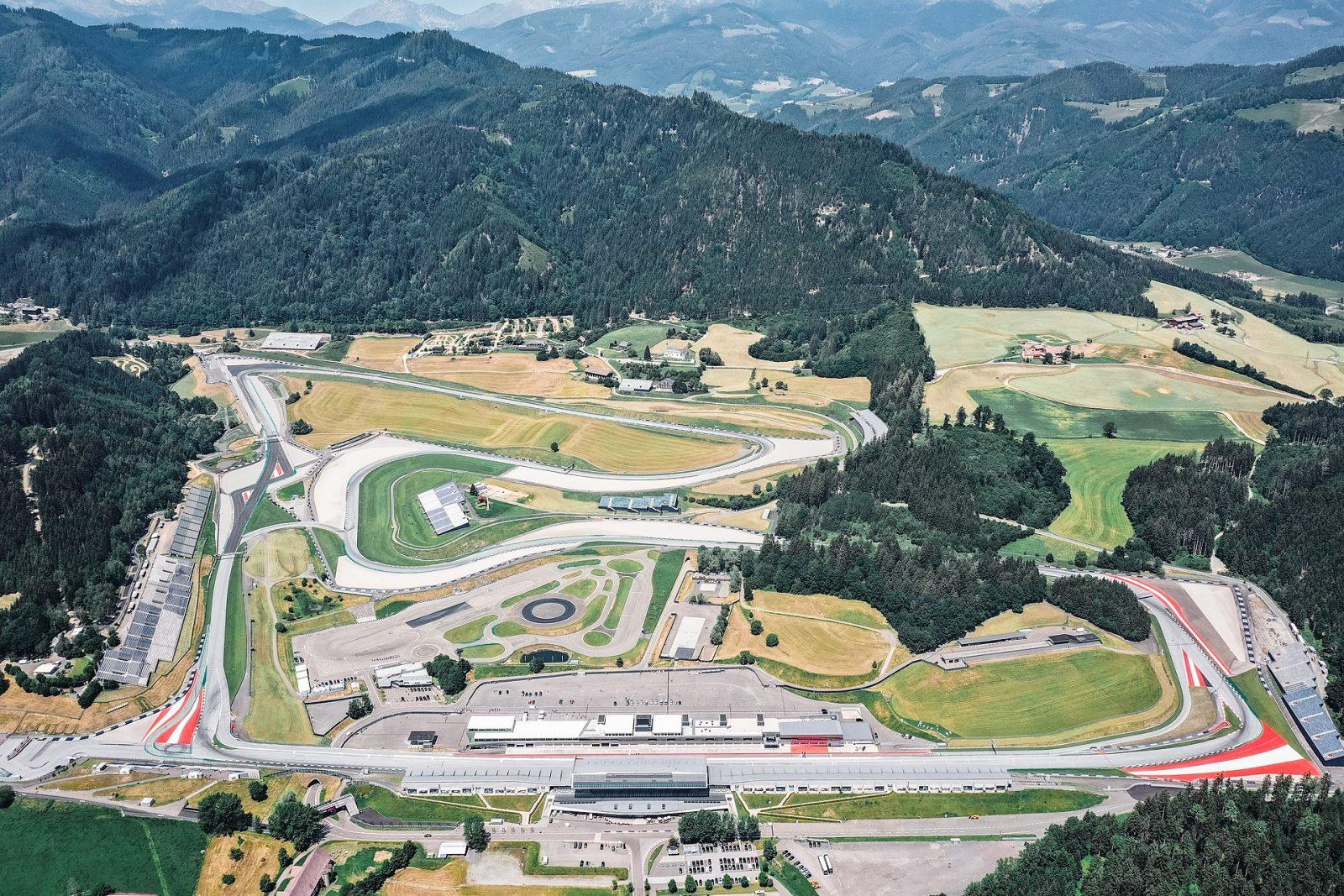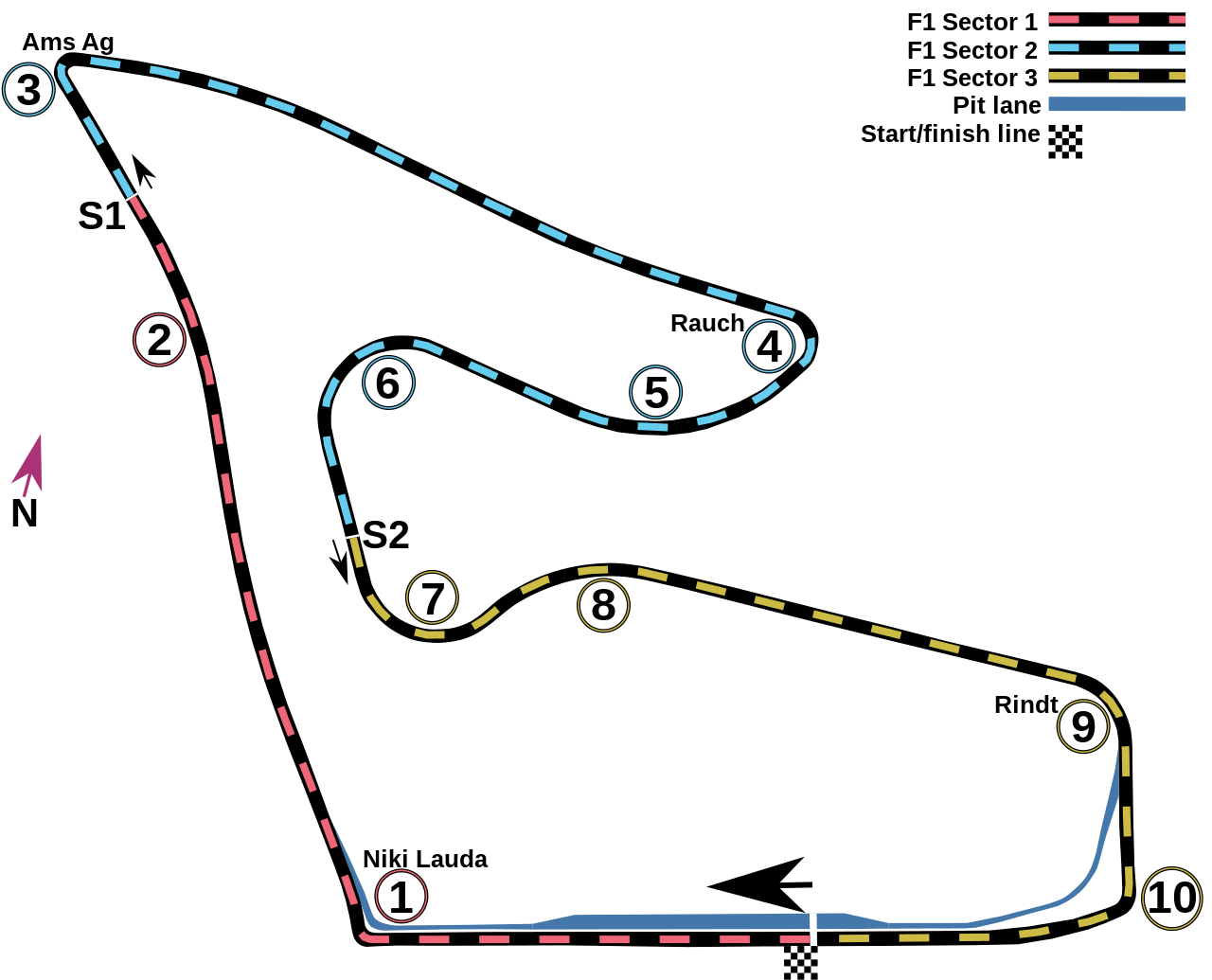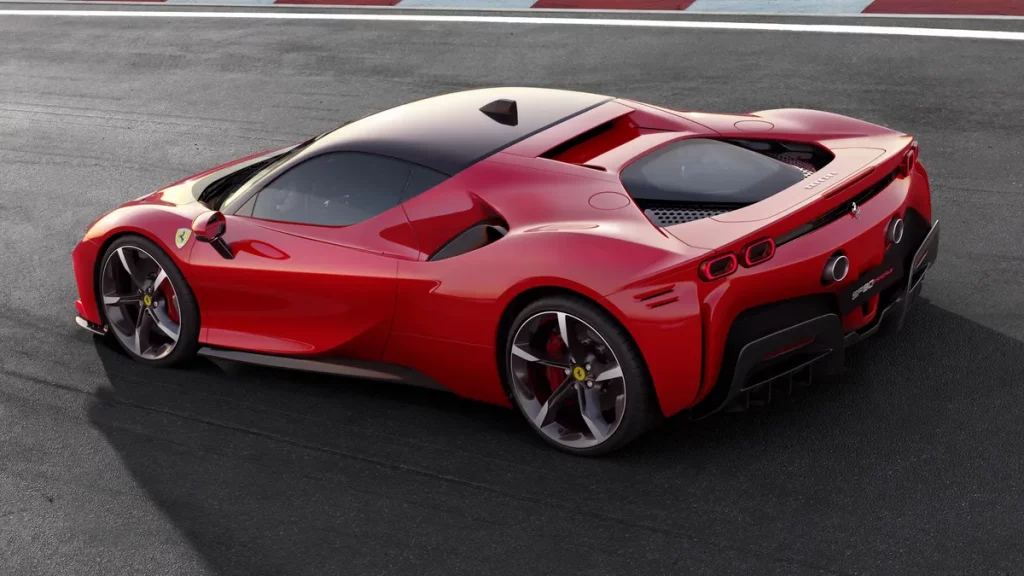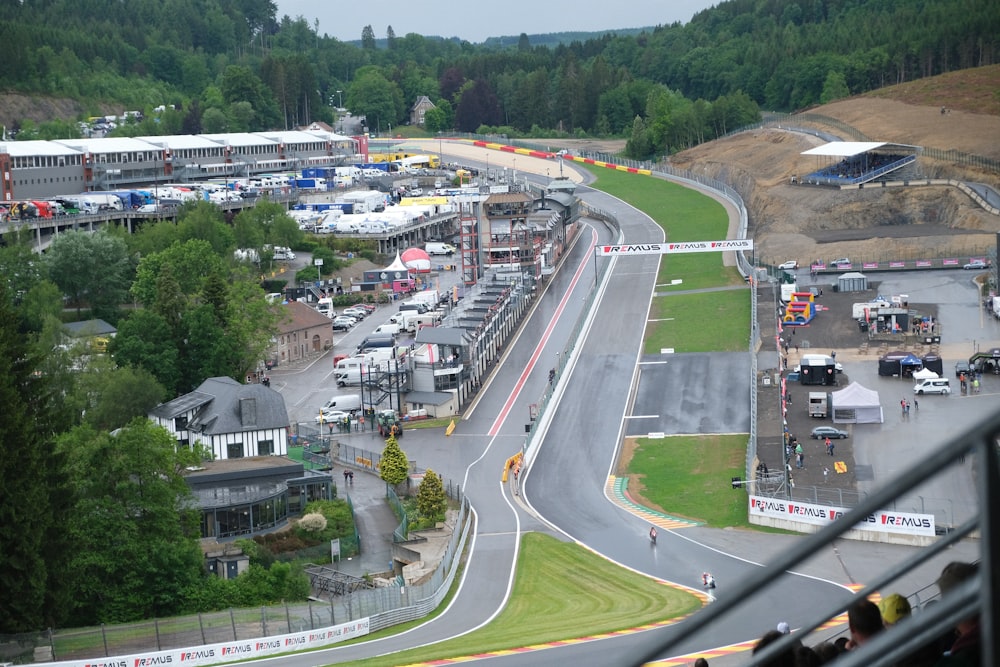
The Red Bull Ring, located in the heart of the Styrian mountains in Austria, is a prominent racing circuit known for hosting Formula 1 and MotoGP races annually. With a rich history and a series of transformations, the Red Bull Ring has become a symbol of modern racing and a testament to the passion of its owners and fans. This article provides an in-depth look into the circuit’s history, track data, significant changes, and the events that have taken place at this iconic venue.
Circuit History
Originally opened in 1969 as the Österreichring, the circuit was built to replace the Zeltweg airfield circuit, which had been used between 1958 and 1968. The Österreichring was a fast and majestic track laid out among the scenic Styrian hills, quickly becoming a favorite among drivers. It was a true driver’s circuit, featuring fast sweeping corners taken at high speeds.
The track hosted its first Austrian Grand Prix in 1970 and remained on the Formula 1 calendar until 1987. Throughout this period, the circuit witnessed numerous memorable races and moments, including some unexpected winners, such as Vittorio Brambilla in 1975 and Alan Jones in 1977.
Safety Concerns and Tragedy Prompt Changes
As the high speeds and close proximity of the barriers raised safety concerns, the circuit experienced some tragic incidents. The death of Mark Donohue in 1975 during the warm-up for the Austrian Grand Prix marked a turning point for the track. This tragedy led to several modifications, such as the tightening of the first corner and the introduction of a chicane in 1976.
Despite these changes, the circuit continued to face safety challenges, with incidents like Stefan Johansson’s crash in 1987 during practice and multiple accidents during the race, ultimately leading to the FIA dropping the Österreichring from the F1 calendar.
In response, the circuit underwent further modifications, increasing run-off areas in various corners and widening the main straight. However, these changes were not enough to bring Formula 1 back to the track, and the circuit struggled to maintain major racing events through the late 80s and early 90s.
The A1-Ring Emerges in Shortened Form
In 1996, with funding from a major Austrian telecommunications company, the circuit was reborn as the A1-Ring. Hermann Tilke, a renowned track designer, was hired to reconfigure the track to meet F1’s safety requirements. The circuit was dramatically shortened, and many of its fast corners were replaced with tighter bends and hairpins.
New pits and grandstand facilities were also constructed, and alternative short and club circuits were introduced for the first time. The A1-Ring was a modern facility, but many lamented the loss of the fast corners that made the original Österreichring so popular.
Formula 1 returned to the circuit in 1997, and the A1-Ring hosted F1 races until 2003. However, financial difficulties ultimately led to the cancellation of the Austrian Grand Prix in 2004.
Red Bull Takes Over – But the Circuit Closes
After the loss of the F1 race, the track was sold to Red Bull’s Dietrich Mateschitz in 2004. Ambitious plans were hatched to extend the circuit and add facilities such as a race school, auto museum, hotel, and a home for Mateschitz’s aircraft collection. Unfortunately, due to environmental concerns and regulatory hurdles, the project was halted, leaving the circuit dormant for six years.
Revival Sees Heavy Investment and Reopening
Determined to revive the circuit, Mateschitz and Red Bull invested heavily in the facility, adding a vehicle dynamics area, off-road track, go-kart track, hotels, and a country club. Renamed the Red Bull Ring, the circuit reopened in May 2011, with demonstrations of Red Bull racing machinery and a round of the Historic F1 Championship.
Since then, the circuit has hosted various racing events, including the return of Formula 1 in 2014 and MotoGP in 2016. The track has also been re-measured, and multiple safety improvements have been made.
Track Data

The Red Bull Ring is a 4.326-kilometer (2.688 miles) long circuit featuring a total of eight turns. The track consists of a mix of fast straights and slow corners, providing an exciting challenge for drivers and plenty of overtaking opportunities for spectators.
Lap Data
- Lap length: 4.326km (2.688 miles)
- Race laps: 71
- Race distance: 307.02km (190.773 miles)
- Pole position: Left-hand side of the track
- Lap record: 1’05.609 (Carlos Sainz Jr., 2020)
- Fastest lap: 1’02.939 (Valtteri Bottas, 2020, qualifying three)
- Maximum speed: 327.4kph (203.437 mph)
- Distance from grid to turn one: 216.94m
Car Performance
- Full throttle: 79%
- Longest flat-out section: 868m
- Downforce level: Low/medium
- Gear changes per lap: 32
- Fuel use per lap: 1.48kg
- Time penalty per lap of fuel: 0.056s
Strategy
- Pit lane time loss: 16.1s
- DRS zones: Three (activation points at 102m after turn one, 100m after turn three, and 106m after turn 10)
How the Circuit Has Changed
Over the years, the Red Bull Ring has undergone significant transformations, from its early days as the Österreichring to its current incarnation as a modern racing facility. One of the most notable changes was the introduction of tighter corners and hairpins by Hermann Tilke in the A1-Ring era, replacing the fast, sweeping bends that characterized the original track.
Further changes have been made since the circuit’s reopening as the Red Bull Ring in 2011, including safety improvements and track modifications to accommodate both Formula 1 and MotoGP events.
Past and Present Events
The Red Bull Ring has hosted numerous prestigious racing events throughout its history, including Formula 1, MotoGP, DTM, European Truck Racing Series, European Le Mans Series, and many more. The circuit has also seen some historic moments, such as Vittorio Brambilla’s memorable victory in 1975 and the return of Formula 1 in 2014.
Formula 1
The Red Bull Ring has been a staple on the Formula 1 calendar since its return in 2014. The circuit provides thrilling races and plenty of overtaking opportunities, thanks to its mix of fast straights and slow corners. Fans have witnessed memorable moments, such as Max Verstappen’s stunning victory in 2019 and the back-to-back races in 2020 due to the COVID-19 pandemic.
MotoGP
Since 2016, the Red Bull Ring has hosted the Austrian round of the MotoGP championship. The circuit has proven to be a popular addition to the calendar, with riders and teams praising the track’s challenging layout and breathtaking scenery.
How to Get There
The Red Bull Ring is located in the rural town of Spielberg, in the mountainous Styrian region of Austria. The closest airport is Flughafen Graz (GRZ), approximately 85km from the circuit, while Vienna International Airport (VIE) is 200km away.
Visitors can reach the circuit by train, with Knittelfeld Bahnhof being the closest station. Free shuttle buses are available for the 10km journey from the station to the circuit during the Austrian Grand Prix weekend. Alternatively, visitors can use the Eventbus service, which operates buses to the circuit from major Austrian cities.
For those who prefer the convenience of driving, the circuit is situated near the S36 motorway, making it easily accessible by car. Trackside parking is free, and it takes approximately one hour to reach the track from Graz and two hours from Vienna.
Where to Stay
Due to its rural location, accommodation near the Red Bull Ring is limited, with many visitors choosing to stay in Graz or camp at the circuit. Camping is a popular option, with seven color-coded campsites available around the track.
Graz offers a variety of hotels, although prices can be higher during race weekends. Some popular options include Der Marienhof Hotel Garni, Hotel Süd, Hotel Gollner, Best Western Plus Amedia Hotel Graz, and Mercure Graz City.
For those looking for more unique accommodation, several mountain chalets are located within 30km of the circuit, providing a picturesque and tranquil setting.
Guided Tours and Track Days
The Red Bull Ring offers guided tours, giving visitors a behind-the-scenes look at the circuit’s facilities and history. The tour includes access to VIP lounges, race control, medical center, media center, and the impressive voestalpine wing. Visitors can also experience driving on the track through various driving experiences and track days.
The Red Bull Ring is a testament to the passion for motorsport in Austria and the commitment of Red Bull’s Dietrich Mateschitz. With a rich history, stunning scenery, and thrilling racing action, the Red Bull Ring continues to be a favorite among fans and drivers alike. Whether attending a Formula 1 or MotoGP race, visitors are sure to have an unforgettable experience at this iconic circuit.

